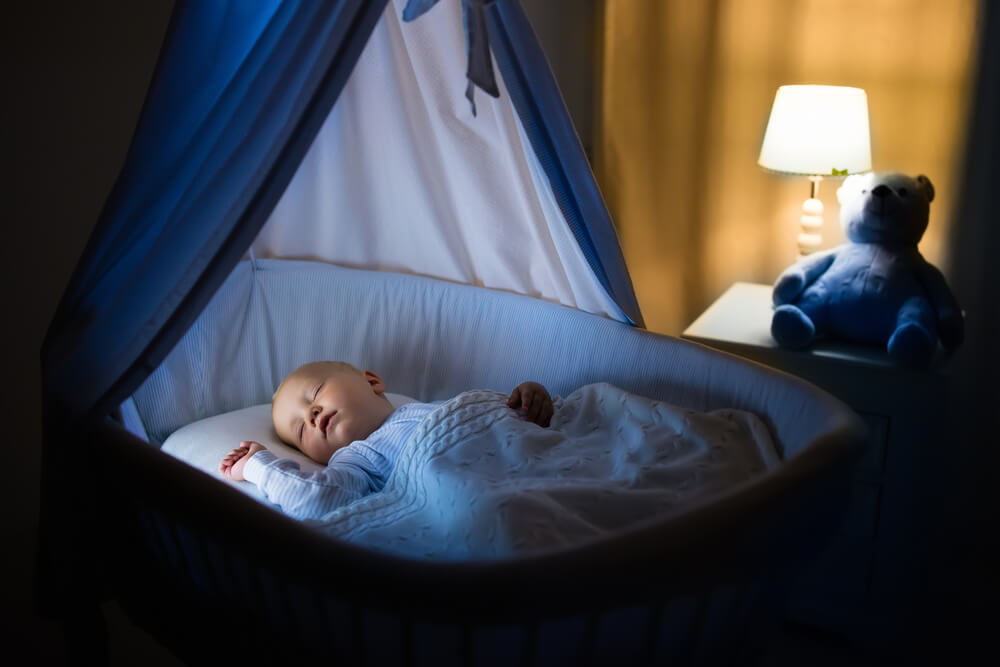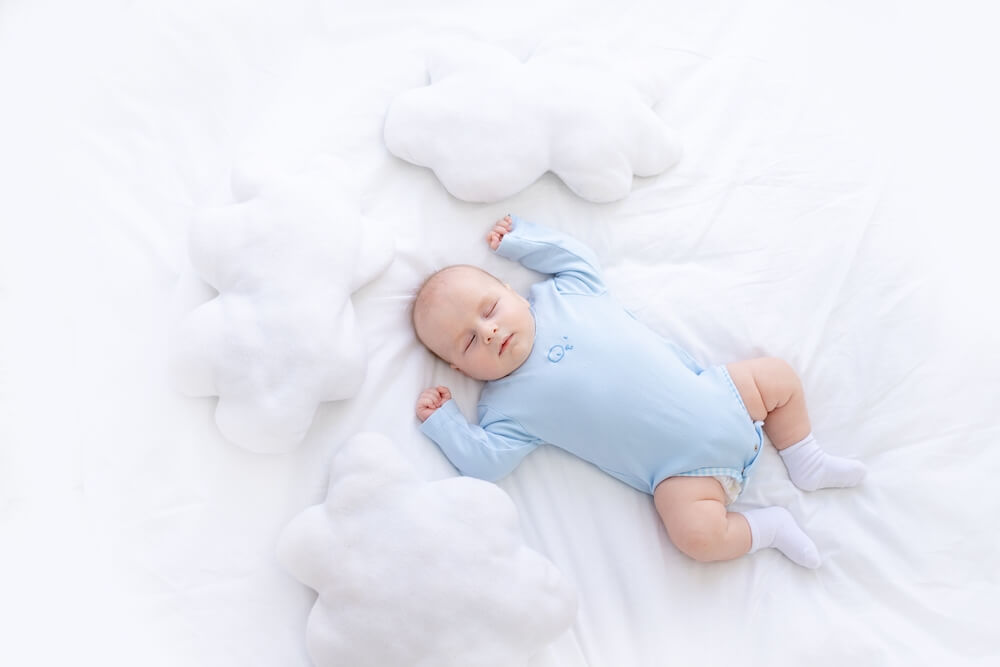Caring for your little bundle of joy is probably the most beautiful thing for a parent. Still, no matter how great it feels, caring for a vulnerable newborn sometimes seems challenging and intimidating. For instance, when your newborn sleeps on their side, you may get concerned, and even if you reposition them on their backs, they may continue to squirm until they roll on their sides.
Even worse, your baby may refuse to fall asleep unless they are sleeping on their sides or will keep fussing until you put them sidewise.
Unfortunately, sometimes your bundle of joy may turn into a bundle of worry, and all the information about SIDS and safe sleeping positions will likely only make you more worried and stressed out.
No need to suffer a nervous breakdown. Try to calm down even if your newborn is constantly rolling on its side. The team at Worldwide Pediatrics is here to uncover the signs when you should be concerned.
Back Is Best
Even though research shows that back sleeping is best for babies, it doesn’t mean an infant sleeping on its side will ultimately lead to complications. As the baby gets stronger, they will become more and more active during their sleep, and rolling to their sides becomes more frequent. This becomes even more prevalent when the infant nears their first birthday. And thankfully, it is at this time when the sleep-related worries should dissipate.
Until then, there are many things parents can do to keep their newborns from rolling to their side to sleep. Still, before we go there, we will discuss the most prevalent risks that may happen if your baby doesn’t sleep on their back.
Some might think that a newborn sleeping on the side is actually safer than back sleeping, as the latter may cause the baby to choke if they vomit or spit up milk. Still, years of research show that this is a myth, and there’s no added protection from choking when an instant is sleeping on their side.
As a matter of fact, study results show that back sleeping will actually lower choking risks as newborns are more capable of clearing their airways if they sleep on their backs because the automatic reflexes that help them swallow or cough up any spit-ups can be more efficient when they sleep on their backs.

SIDS
SIDS, or unexpected and unexplained Sudden Infant Death Syndrome, is the most serious concern when the baby sleeps on their side. Even though the risks increase the most when a baby sleeps on the tummy, sleeping on the side can make it easier to accidentally or unintentionally roll from the side to the stomach. This may also lead to suffocation.
SIDS is the leading cause of infant death in newborns between one month and to one-year-old affecting approximately 3,500 families a year in the US.
Still, when it comes to SIDS, parents should know that tummy sleeping isn’t the sole factor. Other things that may increase the risks are:
- Smoking during pregnancy or secondhand smoke following birth
- Premature birth
- Sleeping in a bed with parents
- Baby sleeping on a couch, sofa, or car seat
- Parental drug or alcohol abuse
- Bottle-feeding the baby instead of breastfeeding
- Too many unnecessary toys or blankets inside the bassinet or crib
As you can see, only some of these factors are within the parent’s control, and you should always remember that most premature babies will do well, and both bottle-fed and breastfed babies are healthy. On the other hand, secure the things you can control. Avoid sleeping in the same bed as your child, and make sure that the bassinet and crib aren’t overcrowded with unnecessary blankets and toys.
Lastly, always make sure to put your baby on their back to sleep.
Later, we will also discuss what you can do to prevent your newborn from rolling to the side.
Flat Head
Plagiocephaly, or an oddly-shaped flat head, may occur from sleeping in only one position when the baby sleeps on their back. This happens because newborns have softer skulls and weaker neck muscles in their first few months of life, and sleeping in one position for long – may that be the back or one particular side – some flattening may occur.
So, no matter whether your newborn is sleeping on their side or back, a flat head may occur, but you shouldn’t be overly concerned since it’s completely normal and will resolve on its own. Also, there are several tactics that will prevent any flat spots from developing.
One great way to prevent this is to lay your newborn on the back for sleeping or nap time. You might have noticed that babies will likely turn their heads to the side to look at something instead of staring at the wall before they fall asleep. So, make sure that their head stays on the side, put a toy outside the crib, and let them focus on that.
And to avoid having the baby in the same position all the time, keep the toy in sight, but ensure to change the position of the newborn’s head by alternating the positions in the crib.
For instance, you can always try the following:
- On the first day, place the baby with their head pointing at the crib’s head.
- The following day, place the baby with its head pointing at the crib’s foot. They will most likely turn their heads the other way to watch the room.
- Alternate these positions.
- Make sure to remove mobile toys hanging overhead so the baby won’t look straight up.
- Check on the infant often; ensure that the baby isn’t sleeping on the side but has their face turned towards the room.
Also, never forget about the importance of supervised tummy time for your baby. Spending time on their tummy can prevent flat spots and helps babies a great deal in developing their upper body, arm, and neck muscles.
So, don’t encourage your baby to sleep on the side to avoid flattening. It resolves on its own, and the complications and risks associated with newborns sleeping on their sides can be much more severe.

Torticollis In Newborns Sleeping on Their Sides
The term may seem unfamiliar, but chances are, you’ve woken up with a neck sprain from sleeping funny several times. Well, that is torticollis, and it may happen to newborns, too (called “wry neck”).
The condition often happens from birth due to the baby’s position in the womb but may also occur later, up to three months after birth. In the latter case, it most often happens because the infant is sleeping on their side, which means there’s less support for their head and neck.
Spotting the signs of torticollis in infants may be challenging because they generally don’t move their necks at this point. Still, some warning signs may be the following:
- The infant tilts their head in one direction
- The baby prefers getting breast milk only from one side
- They only follow you with their eyes instead of looking over their shoulder to follow you
- They are unable to turn their head completely
Torticollis may also only encourage the baby to sleep on the side to turn their head in the same side and direction every night to be more comfortable. This is less than ideal, so make sure to place the infant on their back.
On that end, consult your baby’s pediatrician if you see any torticollis signs. They can recommend simple neck-strengthening exercises that you can perform at home.
Harlequin Color Change
Harlequin color change may affect up to ten percent of newborns when they sleep on their sides. The condition is harmless, but it causes half of the infant’s body and face to become red and/or pink. The problem is only temporary and subsides within around two minutes, and it occurs because the blood collects in smaller blood vessels on the side the baby sleeps on.
So when your newborn sleeps on their side, place them on their backs. And even though these color changes are harmless, don’t forget that there are more serious risks involved with side sleeping.
Can Babies Sleep on Their Side and Be Safe?
So, is it a huge no-no, or can babies actually sleep on their side without any problem? The problem is that side sleeping can make it easier for the baby to roll onto the stomach accidentally. This means that side sleeping isn’t necessarily safe, especially if the baby is younger than four months. At this age, newborns are too small and weak to lift their heads, let alone change their sleeping position.
So when your baby sleeps on their side under your supervision, nudge them gently back onto their back. On the other hand, if the baby is rolling to the side after they’ve been put to sleep on their back, parents shouldn’t worry. Experts state that it’s safe to let babies sleep on their sides in case they are able to roll over entirely on their own.
Once the baby is older than four months, it will be stronger and have improved motor skills, meaning that it will be able to lift its head to look around and roll over. They will also be able to put themselves onto their stomachs. Simply put, at this age, babies can sleep on their sides, but only if they end up in that position on their own.
Still, remember that laying your baby on their back for bedtime and nap is the safest. Putting them on their stomach isn’t safe or recommended, especially in their very first year of life. While an infant sleeping on their side is at risk of some harmless problems, they are also at risk of rolling onto their stomach, which may induce the risk of more severe issues.
Can You Prevent a Newborn From Sleeping on Their Side?
Fortunately, there are a few ways you can prevent the infant from side sleeping before the time is right to let them if they roll on their own.
- Look for a firmer sleeping surface for the baby. The playpen, bassinet, or crib should have a firm mattress, meaning that the baby’s body shouldn’t be able to leave imprints on it. Stay away from softer mattress options that allow the baby to sink into them, as they will make rolling to the side a lot easier.
- Get a good video baby monitor. A direct visual on your bundle of joy when they are in their room can give you a heads-up if something’s off.
- Swaddle the baby until it can roll over. To prevent them from rolling onto their sides and ensure that they sleep more comfortably on their back, consider wrapping the infant like a burrito. Remember to swaddle the newborn loose enough so that they will be able to move their hips. Also, you shouldn’t forget when to stop, meaning swaddling may become risky if the baby can actually roll.
- Using a sleep sack may also work. Some babies simply can’t stand being swaddled, so using a sleep sack can be a great intermediate step. This tiny sleeping bags for babies come in arms-free versions that are better for babies that can already roll. Still, the sack itself may help the baby stay asleep for more extended periods without rolling over onto their side.
Don’t forget that the crib should have tightly fitted sheets along with the firm mattress we’ve discussed above. You might be tempted to use baby positioners or extra pillows to keep the baby on their back. It seems only normal and natural, as most baby car seats have built-in cushions to keep the infant’s head safe and in place.
Still, experts from the Food and Drug Administration’s Consumer Product Safety Commission state that using these positioners may do more harm than good. These foam or padded risers are used to keep the baby’s body and head in a safe back position, but there have been a few fatal cases when these positioners actually caused the babies to suffocate while they were sleeping.
On that end, professionals also advise removing other moveable or bulky things in the crib as they can get caught between the crib and the infant. These things include the following:
- Extra pillows
- Bulky or extra blankets
- Bumper pads
- Large teddy bears and other stuffed animals and toys
- Too much clothing
- Too many layers

To Recap
Without a doubt, back sleeping is ideal for infants as this position is the best to prevent sudden infant death syndrome and eliminate other, easily treatable problems associated with side sleeping like a color change or wry neck.
The baby can safely sleep on their side after turning four to six months old when they roll over onto their backs on their own and after being placed on their back. And even though slide sleeping is safer after six months, you should always put the baby to sleep in a back-sleeping position until they reach their first birthday.
Lastly, don’t forget to consult your bundle of joy’s pediatrician if you notice any side sleeping preferences in the first three months. Also, reach out to them if you are concerned about other conditions, such as flat spots, have other worries, or simply for reassurance.
Looking for Expert Help?
As you can see, side sleeping has a few significant concerns, but with a little bit of help and supervision, you can ensure that your baby will be safe and sound asleep every night. And if you want more information about side sleeping or want to prevent any other sleeping problems, our experts are your go-to practitioners.
Our stellar general pediatric care in Plantation and Doral, Florida, not only helps parents keep their lovely little ones healthy, but we also educate them on how to become the best parents they can be.



